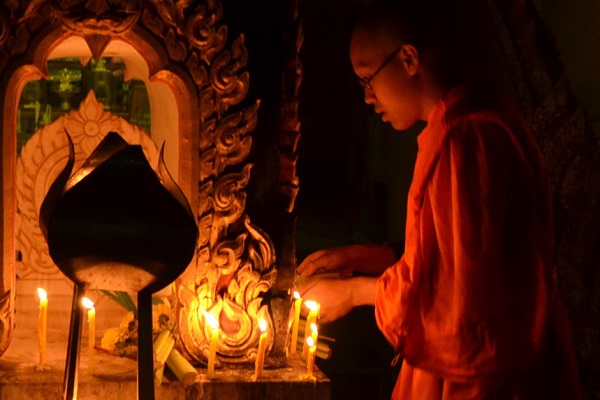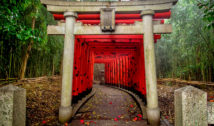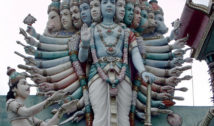
Buddhists Celebrate Magha Puja Day
- By Derek Welch --
- 22 Mar 2016 --
![By ผู้สร้างสรรค์ผลงาน/ส่งข้อมูลเก็บในคลังข้อมูลเสรีวิกิมีเดียคอมมอนส์ - เทวประภาส มากคล้าย (Own work) [CC BY-SA 3.0], via Wikimedia Commons](https://www.worldreligionnews.com/wp-content/uploads/2016/03/Magha_Puja_Day_in_Wat_Khung_Taphao_04.jpg)
Traditions and history behind Magha Puja Day.
Magha Puja is also known as the Full Moon Day. It is a Buddhist festival that is celebrated by Buddhists in various nations on the third lunar month to commemorate four good things that happened in their history about 2,500 years ago. The main reasons why this festival is celebrated include:
Buddhists Celebrate Magha Puja Day[/tweetthis]
In some instances, the Magha Puja Day is also referred to as Fourfold Assembly Day because of the four things that happened.
The initial large Buddhist gatherings were held only a few months after Buddhist enlightenment. The second one came after 45 years only three months prior to Buddha’s death. The recent Magha Puja Day happened a time when Buddha called his disciple Ananda and informed him that his is going to die after a period of three months. Therefore, the festival is used to commemorate important teachings of the Buddha.
Buddhist gather at temple at dusk where they make merry, share flowers, incense and lit candles. They celebrate the day by lighting candles and moving in a circle three times around the temple’s main hall in honor of the Three Jewels of Buddhism: the Buddha, Sangha and the Dharma.
#Buddhist holidays celebrated in year 2016: Wednesday Mar 23, 2016 – Magha Puja Day https://t.co/7vy1Sxhw4c
— Marian (@astrowikia) March 3, 2016
Those who are far away from Buddhist temples, celebrate the Day by keeping their houses clean in preparation of the holiday. Also, they are supposed to abstain from taking anything that is not given, sexual misconduct, telling lies, distilled and fermented intoxicants and abstain from taking the lives of living beings.
Magha Puja Day is a day where Buddhists are urged to meditate on the three Jewels and their role in the Buddhist religion. They should meditate about the Buddha Jewel which reminds them about his attainment of enlightenment, the Sangha Jewel which represents the community of Buddhist and the Dharma Jewel which represents the Buddha’s own teachings.



















